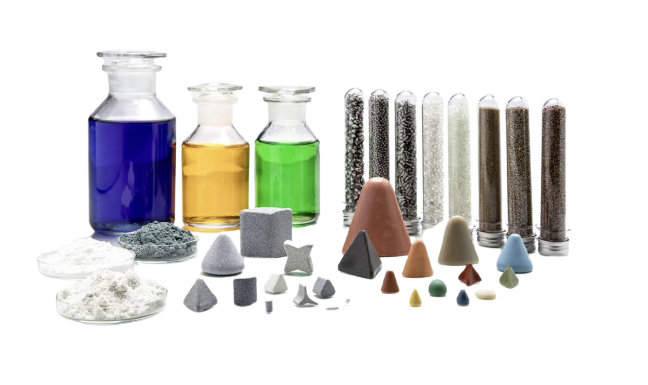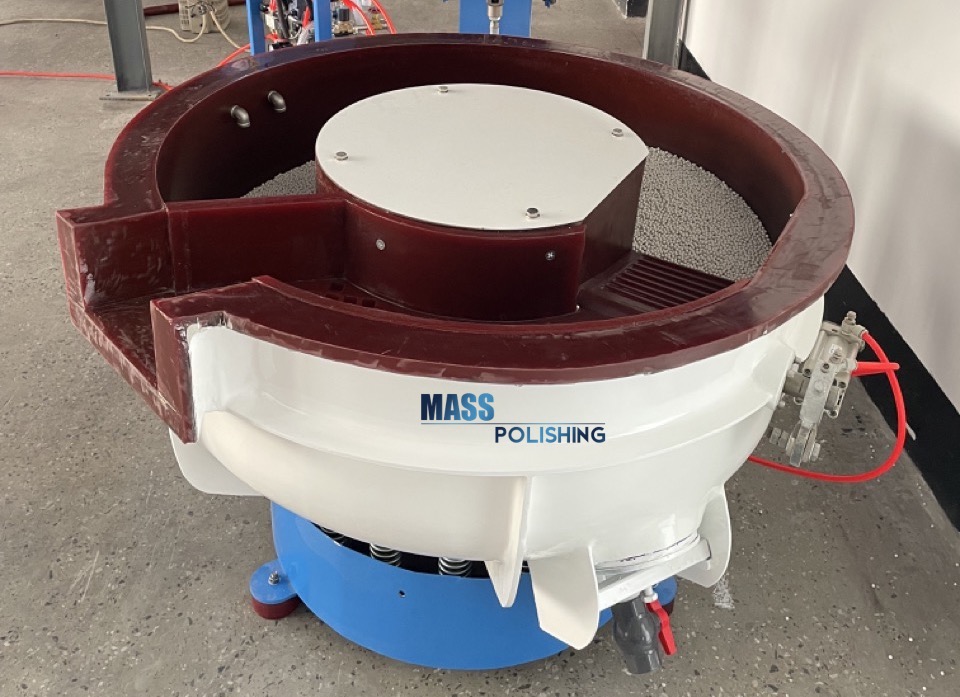
Aluminum is a popular material for many industrial and household applications due to its lightweight, strength, and durability. However, it can become dull and scratched over time, reducing its aesthetic appeal and potentially impacting its performance. Fortunately, aluminum parts can be polished using a vibratory finishing machine to restore their appearance and protect their surface. In this article, we'll discuss the steps involved in polishing aluminum parts using a vibratory finishing machine.
Step 1: Select the Right Media and Compound

The first step in polishing aluminum parts using a vibratory finishing machine is to select the right media and compound. The media is the abrasive material that will be used to remove surface imperfections and create a smooth finish. There are many types of media available, including ceramic, plastic, and steel, each with its own unique properties.
For polishing aluminum, we recommend using ceramic media, as it is the most effective in removing scratches and creating a uniform finish. The media should be small enough to fit inside the vibratory finishing machine but large enough to avoid getting stuck in small crevices or cavities.
In addition to the media, you'll also need a polishing compound. This is a liquid or paste that is applied to the media to enhance its abrasive properties and lubricate the surface of the aluminum during polishing. There are many different types of compounds available, each designed for specific applications. For aluminum, we recommend using a compound that is specifically formulated for aluminum to achieve the best results.

Once you have selected the appropriate media and compound, the next step is to load the aluminum parts and media into the vibratory finishing machine. Ensure that the machine is properly cleaned and maintained to avoid contamination of the media and parts. Additionally, make sure that the machine is not overloaded to ensure that the parts can move freely within the media.
Step 3: Set the Vibratory Finishing Machine to the Appropriate Settings

To achieve the desired finish, it's important to set the vibratory finishing machine to the appropriate settings. This includes adjusting the speed, amplitude, and time duration of the machine. For polishing aluminum, we recommend using a low to medium speed (around 1200 RPM) and a low amplitude (around 1/16th inch). The duration of the process will depend on the condition of the parts, the desired finish, and the specific vibratory finishing machine being used. Typically, a polishing cycle can take anywhere from 30 minutes to several hours.

During the polishing process, it's important to monitor the progress of the aluminum parts to ensure that they are being polished uniformly and effectively. If the parts are really thin, you can use the Anti-Adhesion Beads resistant to adhesion. Check the parts periodically to determine if the desired finish has been achieved. If necessary, adjust the settings of the vibratory finishing machine to achieve the desired result.

Once the aluminum parts have been polished to the desired finish, remove them from the vibratory finishing machine and rinse them thoroughly with water to remove any remaining polishing compound. Dry the parts with a vibratory Dryer or a Centrifugal Dryer to avoid water spots or rust formation.
Step 6: Apply a Protective Coating
To maintain the polished finish of the aluminum parts, it's important to apply a protective coating. This can be a clear lacquer or a wax-based polish that will protect the surface of the aluminum from oxidation, corrosion, and other environmental factors.
Conclusion:
Polishing aluminum parts using a vibratory finishing machine is an effective way to restore their appearance and improve their performance. By selecting the appropriate media and compound, loading the parts and media into the vibratory finishing machine, setting the machine to the appropriate settings, monitoring the progress of the polishing process, rinsing and drying the parts, and applying a protective coating, you can achieve a uniform and smooth finish on your aluminum parts.
Polished aluminum parts not only look better but can also perform better, as they are less susceptible to corrosion and wear. Additionally, polished aluminum parts can improve the overall aesthetics of a product, making it more attractive and desirable to potential customers.
By following the steps outlined in this article, you can polish your aluminum parts using a vibratory finishing machine and achieve professional-looking results. Remember to take care when selecting the media and compound, setting the machine to the appropriate settings, and monitoring the progress of the polishing process to achieve the desired finish.
We hope this article has been helpful in guiding you through the process of polishing aluminum parts using a vibratory finishing machine. Happy polishing!